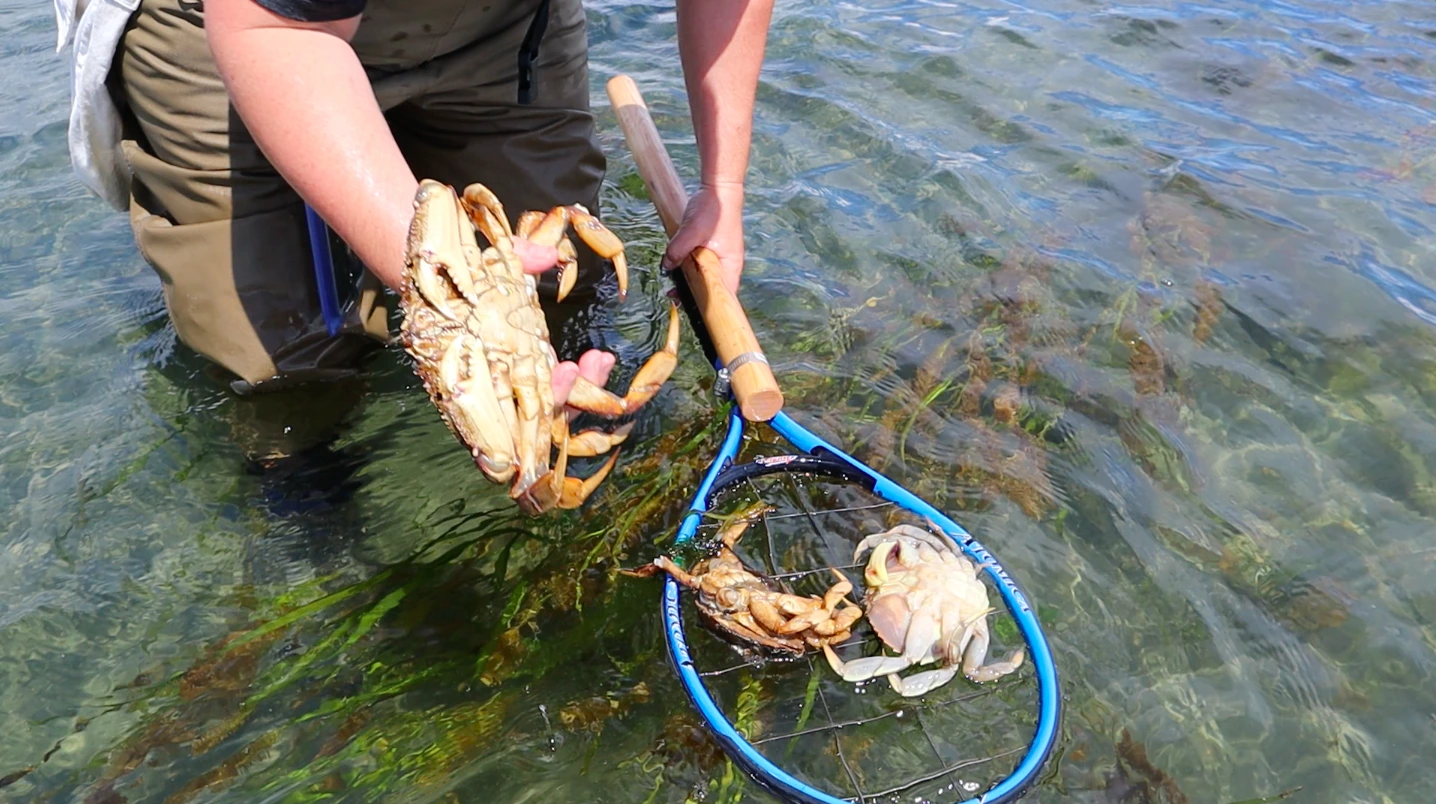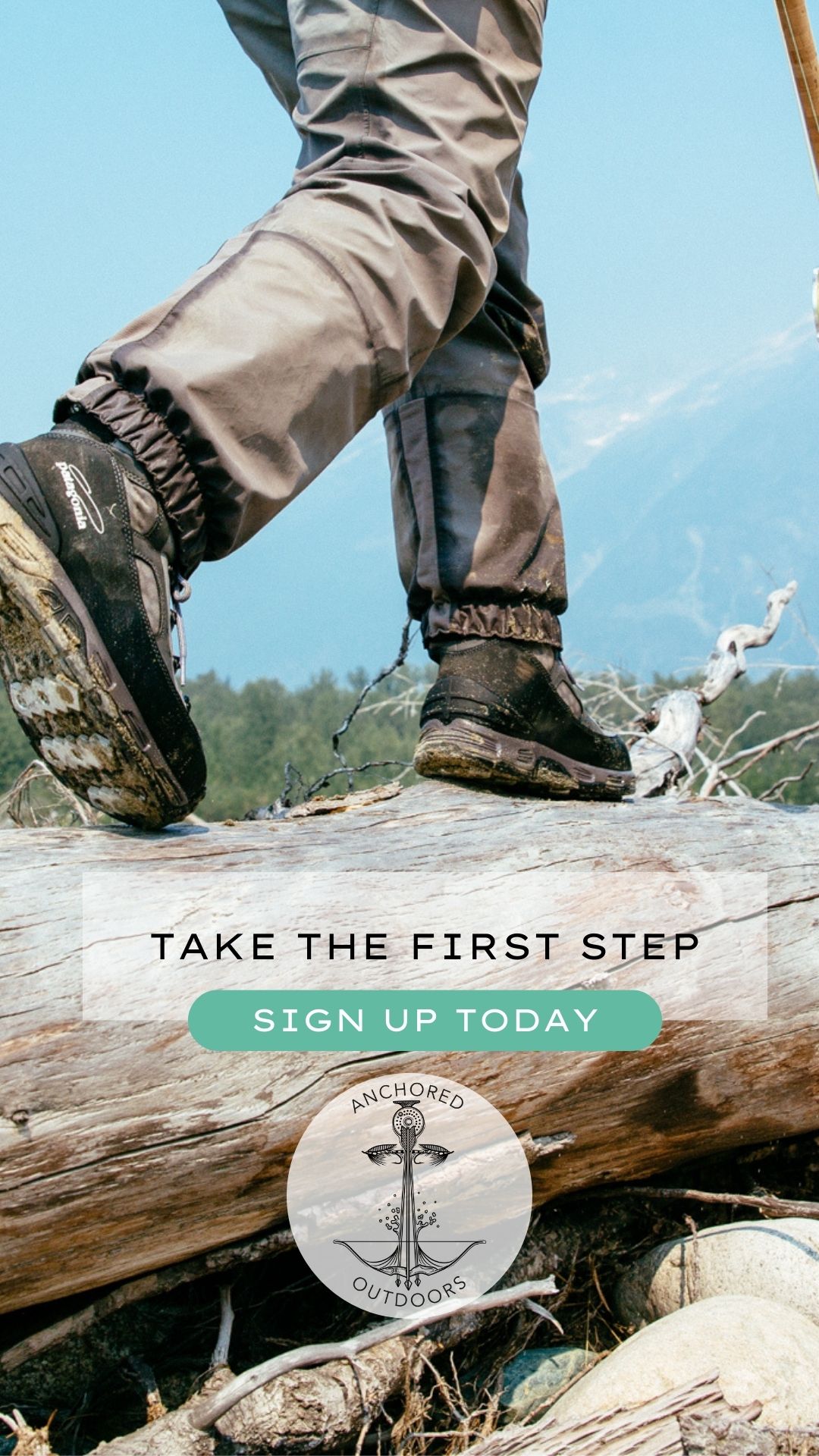Being from the Pacific Northwest, I’ve done my share of crabbing. When I was a kid, crabbing involved baiting traps or ring nets and keeping a watchful eye for thieves. But the Vancouver area has since changed. Between the rapidly sprouting ‘no fishing’ signs and an influx of seafood aficionados, crabbing grounds have gotten pretty crowded, and finding crabs has become difficult.
So earlier this year, when I met some fellow British Columbians at one of the MeatEater live shows, I was intrigued when they told me about their unique approach to catching Dungeness crabs. Tiffany and Travis Bader do all their crabbing on foot. No traps, baits, boats, thievery, or sharp elbows required. In fact, they told me, they sight-fish in water up to their waists and usually bring home enough crab for dinner. I jumped at their offer to join them for a day on the water.
A week before our scheduled date, Tiffany reported that the tides were in our favor—extremely low. We’d be chasing the tide out, wading and picking up crabs along the way. She suggested I pack waders and boots just in case the water was still a little cold, but she and Travis would have all the other necessary gear. I purchased a one-day saltwater license for $5.50, curious and maybe a little skeptical.
Tiffany met me at the appointed place and time. She pulled one of their homemade crab catching contraptions from the trunk of an SUV and handed it to me. The device consisted of an old tennis racquet tied to a long wooden pole. Tiffany and Travis had removed all strings from the racquet and replaced them with several pieces of thick wire tied in to create a grid with gaps about four inches wide.
We wadered up and walked into knee-deep water. Almost immediately, we spotted a scurrying crustacean, its orange body glowing against the gray sand. Tiffany plunged her racquet apparatus into the water and scooped up the beautiful crab. I prepared myself for the chaos of trying to recapture it if it fell off, but it gripped tight to the wire. She casually pulled out her measuring device and it held it over the crab. It was short by about a millimetre, so she lowered her racket into the water and let it swim away. The Baders informed me that the Department of Fisheries and Oceans takes every millimetre of the regulations seriously—one millimetre undersize will get you booked. While dip nets and most any scooping contraptions are allowed, anything sharp that might resemble a spear is illegal in British Columbia (this includes rakes and pitchforks).
Dungeness crabs typically grow to about eight inches long, though BC regulations state that retained crabs must measure a minimum of 6.5 inches from each edge of the crab’s carapace(the hard oval-shaped upper shell). Female crabs must be released, and they’re easily identified by the wide, round belly flap on their abdomen. Males have the same flap, except it’s narrow and pointed. They thrive in cool water with a sandy bottom from as shallow as six inches to as deep as 250 feet. Dungeness crabs’ range extends from California, all the way up to Alaska. They’re the most commercially important crab in western North America because of their sweet, flaky meat.
The Bader’s crabbing process seemed simple enough, so I put on my sunglasses and started wading. Dungeness crab can be orange or purple, so polarized lenses help to spot them if they’re hiding in dark turtle grass or sand. In true sight-fishing fashion, we kept the sun at our backs, and hoped for low winds and uninterrupted water. We shuffled through patches of long turtle-grass, scanning the bare-sand fringes for sideways scurrying crabs.
A couple hours later I was headed home with four crabs and a reeling brain. Could it really be that easy? A tennis racket and an IKEA bag? The water wasn‘t even that cold. Had I just been taught the most affordable, sustainable, family-friendly fishing activity out there? Why hadn’t I heard about it, or figured it out myself?
I researched BC’s fishing regulations to try and find more information about hand-picking crabs. It didn’t take long for me to realise why I had assumed crabbing could only be done with traps. The DFO’s website clearly lays out tips on how to set a trap, choose gear and mark buoys but includes little information about hand-picking crabs. The website does, however, explicitly list “hand picking” as a legal method of harvest. I feel a bit foolish about all the crabs I’ve purchased over the years now that I know I can, quite literally, drive down the street and fish one out with a tennis racquet.
The accessibility of sight fishing crabs offers an obvious benefit, but this newly discovered method of harvest attracts me for other reasons as well. While traps and nets are effective, they’re also passive, and I prefer more active and intimate pursuit. Hunting them down is much more exciting and engrossing than sitting around waiting for crabs to find your bait. There’s also an element of camaraderie, physical activity, and sheer excitement that makes this pursuit unique and satisfying.
You may be kicking yourself that you didn’t think to try this sooner (I certainly am), but I promise you’ll forgive yourself once you get started. Just drown your regret in a pot of melted butter and freshly cracked crab legs. That soothed my chafed ego.
Be sure to check your region’s regulations and bag limits as they vary per State and country.




